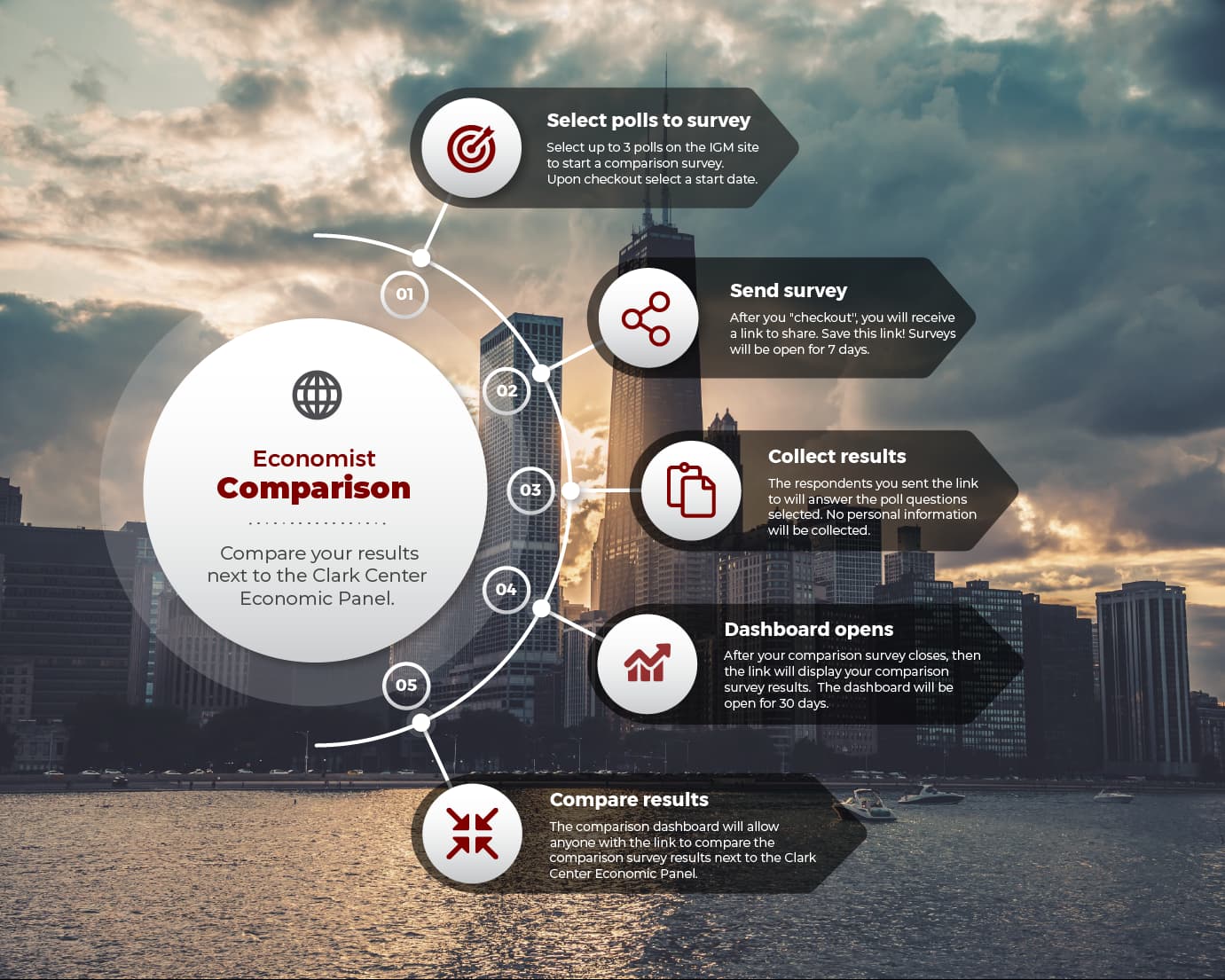Question A:
California's insurance industry regulator issued statements shortly before and shortly after the recent wildfires started (on December 30, 2024, and January 9, 2025):
https://www.insurance.ca.gov/0400-news/0100-press-releases/2024/release065-2024.cfm
https://www.insurance.ca.gov/0400-news/0100-press-releases/2025/release005-2025.cfm
In the face of growing wildfire risks, price caps on insurance premiums have substantially reduced the viability of private property insurance markets in California.
Responses
Responses weighted by each expert's confidence
Question B:
A mandatory one-year moratorium on insurance non-renewals and cancellations would lead to a substantial longer-term reduction in the supply of private home insurance products and the number of households that are insured against catastrophic risk in areas of California affected by recent wildfires.
Responses
Responses weighted by each expert's confidence
Question A Participant Responses
| Participant | University | Vote | Confidence | Bio/Vote History |
|---|---|---|---|---|
 John Campbell |
Harvard | Bio/Vote History | ||
|
There is already evidence of this with insurance companies leaving the state - and it is exactly what economic theory predicts will happen.
|
||||
 John Cochrane |
Hoover Institution Stanford | Bio/Vote History | ||
|
Don't let insurers charge for the risk, they pull out of the market. It's hilarious that the climate-obsessed CA government does not allow insurers to use climate models to assess risk, insisting instead on historical cost.
|
||||
 Francesca Cornelli |
Northwestern Kellogg | Did Not Answer | Bio/Vote History | |
|
|
||||
 Douglas Diamond |
Chicago Booth | Bio/Vote History | ||
|
|
||||
 Wenxin Du |
HBS | Bio/Vote History | ||
|
|
||||
 Darrell Duffie |
Stanford | Bio/Vote History | ||
|
|
||||
 Janice Eberly |
Northwestern Kellogg | Bio/Vote History | ||
|
Price caps and also limitations on the use of forward-looking models prevented risks from being priced. This weakened benefits to implementing mitigation and undermined sustainability of insurers.
|
||||
 Eugene Fama |
Chicago Booth | Bio/Vote History | ||
|
|
||||
 Xavier Gabaix |
Harvard | Bio/Vote History | ||
|
|
||||
 Itay Goldstein |
UPenn Wharton | Did Not Answer | Bio/Vote History | |
|
|
||||
 John Graham |
Duke Fuqua | Bio/Vote History | ||
|
|
||||
 Campbell R. Harvey |
Duke Fuqua | Bio/Vote History | ||
|
Assuming the cap is binding, then if the expected returns for insurance companies is too low, they will not offer insurance thereby decreasing viability. There are plenty of other markets.
|
||||
 Harrison Hong |
Columbia | Did Not Answer | Bio/Vote History | |
|
|
||||
 Wei Jiang |
Emory Goizueta | Bio/Vote History | ||
|
|
||||
 Steven Kaplan |
Chicago Booth | Bio/Vote History | ||
|
|
||||
 Anil Kashyap |
Chicago Booth | Bio/Vote History | ||
|
|
||||
 Ralph Koijen |
Chicago Booth | Bio/Vote History | ||
|
For related research on this topic:
-see background information here -see background information here |
||||
 Camelia Kuhnen |
UNC Kenan-Flagler | Bio/Vote History | ||
|
|
||||
 Andrew Lo |
MIT Sloan | Did Not Answer | Bio/Vote History | |
|
|
||||
 Michelle Lowry |
Drexel LeBow | Bio/Vote History | ||
|
|
||||
 Sydney Ludvigson |
NYU | Bio/Vote History | ||
|
|
||||
 Matteo Maggiori |
Stanford GSB | Did Not Answer | Bio/Vote History | |
|
|
||||
 Gregor Matvos |
Northwestern Kellogg | Did Not Answer | Bio/Vote History | |
|
|
||||
 Tobias Moskowitz |
Yale School of Management | Bio/Vote History | ||
|
|
||||
 Stefan Nagel |
Chicago Booth | Bio/Vote History | ||
|
|
||||
 Jonathan Parker |
MIT Sloan | Bio/Vote History | ||
|
|
||||
 Christine Parlour |
Berkeley Haas | Bio/Vote History | ||
|
|
||||
 Thomas Philippon |
NYU Stern | Bio/Vote History | ||
|
|
||||
 Manju Puri |
Duke Fuqua | Bio/Vote History | ||
|
|
||||
 Michael R. Roberts |
UPenn Wharton | Bio/Vote History | ||
|
|
||||
 Paola Sapienza |
Northwestern Kellogg | Bio/Vote History | ||
|
|
||||
 Amit Seru |
Stanford GSB | Bio/Vote History | ||
|
|
||||
 Robert Stambaugh |
UPenn Wharton | Bio/Vote History | ||
|
|
||||
 Laura Starks |
UT Austin McCombs | Bio/Vote History | ||
|
See for example the work by Susan Cherry of Stanford showing that price regulation and regulatory oversight in the consumer credit market can reduce credit access: "Regulating Credit: The Impact of Price Regulations and
Lender Technologies on Financial Inclusion."
|
||||
 Jeremy Stein |
Harvard | Bio/Vote History | ||
|
|
||||
 Johannes Stroebel |
NYU Stern | Bio/Vote History | ||
|
|
||||
 Sheridan Titman |
UT Austin McCombs | Bio/Vote History | ||
|
|
||||
 Stijn Van Nieuwerburgh |
Columbia Business School | Bio/Vote History | ||
|
Insurance needs to properly price the risk of loss. If it is not allowed to, this results in insurer exits, as seen in FL and CA
-see background information here |
||||
 Toni Whited |
UMich Ross School | Bio/Vote History | ||
|
|
||||
Question B Participant Responses
| Participant | University | Vote | Confidence | Bio/Vote History |
|---|---|---|---|---|
 John Campbell |
Harvard | Bio/Vote History | ||
|
The direction of the effect is clear, the only question is to what extent insurance companies change their expectations about future CA policy based on a one-year moratorium today.
|
||||
 John Cochrane |
Hoover Institution Stanford | Bio/Vote History | ||
|
The long run effects of a one year policy depend on the long run policy. A one year moratorium plus free pricing after that would not have long run effects. A one year moratorium that will be permanent would lead to insurers leaving en masse.
|
||||
 Francesca Cornelli |
Northwestern Kellogg | Did Not Answer | Bio/Vote History | |
|
|
||||
 Douglas Diamond |
Chicago Booth | Bio/Vote History | ||
|
|
||||
 Wenxin Du |
HBS | Bio/Vote History | ||
|
|
||||
 Darrell Duffie |
Stanford | Bio/Vote History | ||
|
To the extent that insurers believe there is a pattern of regulatory changes that lock them into policies, they are more likely to decline to offer coverage, especially if prices are capped by regulation.
|
||||
 Janice Eberly |
Northwestern Kellogg | Bio/Vote History | ||
|
The current system is unsustainable, so it's not a relevant counterfactual. Will a year's moratoria on cancellations substantially change the ultimate system for insuring catastrophic risk? - this seems uncertain, along with the structure of a new functioning system.
|
||||
 Eugene Fama |
Chicago Booth | Bio/Vote History | ||
|
|
||||
 Xavier Gabaix |
Harvard | Bio/Vote History | ||
|
|
||||
 Itay Goldstein |
UPenn Wharton | Did Not Answer | Bio/Vote History | |
|
|
||||
 John Graham |
Duke Fuqua | Bio/Vote History | ||
|
|
||||
 Campbell R. Harvey |
Duke Fuqua | Bio/Vote History | ||
|
If regulators force insurance companies to maintain policies with negative expected returns, this will surely decrease the viability of insurance in certain markets in the future. The insurance company will flee the market as soon as they can.
|
||||
 Harrison Hong |
Columbia | Did Not Answer | Bio/Vote History | |
|
|
||||
 Wei Jiang |
Emory Goizueta | Bio/Vote History | ||
|
|
||||
 Steven Kaplan |
Chicago Booth | Bio/Vote History | ||
|
|
||||
 Anil Kashyap |
Chicago Booth | Bio/Vote History | ||
|
|
||||
 Ralph Koijen |
Chicago Booth | Bio/Vote History | ||
|
|
||||
 Camelia Kuhnen |
UNC Kenan-Flagler | Bio/Vote History | ||
|
|
||||
 Andrew Lo |
MIT Sloan | Did Not Answer | Bio/Vote History | |
|
|
||||
 Michelle Lowry |
Drexel LeBow | Bio/Vote History | ||
|
|
||||
 Sydney Ludvigson |
NYU | Bio/Vote History | ||
|
|
||||
 Matteo Maggiori |
Stanford GSB | Did Not Answer | Bio/Vote History | |
|
|
||||
 Gregor Matvos |
Northwestern Kellogg | Did Not Answer | Bio/Vote History | |
|
|
||||
 Tobias Moskowitz |
Yale School of Management | Bio/Vote History | ||
|
Short-term versus long-term effects could be quite different.
|
||||
 Stefan Nagel |
Chicago Booth | Bio/Vote History | ||
|
|
||||
 Jonathan Parker |
MIT Sloan | Bio/Vote History | ||
|
|
||||
 Christine Parlour |
Berkeley Haas | Bio/Vote History | ||
|
|
||||
 Thomas Philippon |
NYU Stern | Bio/Vote History | ||
|
|
||||
 Manju Puri |
Duke Fuqua | Bio/Vote History | ||
|
|
||||
 Michael R. Roberts |
UPenn Wharton | Bio/Vote History | ||
|
|
||||
 Paola Sapienza |
Northwestern Kellogg | Bio/Vote History | ||
|
|
||||
 Amit Seru |
Stanford GSB | Bio/Vote History | ||
|
|
||||
 Robert Stambaugh |
UPenn Wharton | Bio/Vote History | ||
|
|
||||
 Laura Starks |
UT Austin McCombs | Bio/Vote History | ||
|
|
||||
 Jeremy Stein |
Harvard | Bio/Vote History | ||
|
|
||||
 Johannes Stroebel |
NYU Stern | Bio/Vote History | ||
|
|
||||
 Sheridan Titman |
UT Austin McCombs | Bio/Vote History | ||
|
|
||||
 Stijn Van Nieuwerburgh |
Columbia Business School | Bio/Vote History | ||
|
If risks change, insurance rates should be allowed to change in response to the changed risk. Of course, this should not be a license for price gauging nor should it lead to wild yoy fluctuations in premiums.
|
||||
 Toni Whited |
UMich Ross School | Bio/Vote History | ||
|
|
||||

